Helping Students Summarize Information
Here’s another idea-oriented excerpt from Writing Behind Every Door, the latest book by California middle school teacher Heather Wolpert-Gawron (yes – an author teaching real students in real classrooms!). Also check out her first post on using descriptive writing in non-ELA subjects (like science reports!).

The ability to summarize is often taken for granted. To educators, it seems like a simple concept: get to the main idea, the heart of the matter, the gist.
Yet summarization is actually an ability identified by The Partnership of 21st Century Skills as important for future careers. It’s also a universal writing genre, along with argumentation, that spans across all content areas.
I mean, think about it. You summarize an issue when writing an email. You summarize conversations. You summarize units and chapters. It‘s unavoidable, but it isn‘t something we all naturally do well. So we must teach students how to summarize at the level that we want.
Summarization is difficult for many students and for many reasons. For secondary students, I think the difficulty results in part because it’s such a me-centric development stage – “Why get to the point, when I like to hear myself speak?”
I also think there’s a bit of a myth in their heads about more = more. “If I say more and more, then eventually I’ll hit on it.” But it ends up sometimes like trying to hit a target the size of a pea with a boulder. You might hit it, but you also might not find the pea when you‘re through with the pitch.
Boring zone ahead?
When I teach summarization, I tell students the following:
Summary is about precision. It is about finding the needle in the haystack. It is about only the most important points, and not the ones you can live without. And while you’re at it: the summary gods do not care about your opinion. In fact, they will smite you if you inject voice or judgment into your summary. Summary is all about paraphrasing what you read, not inferring what is not in your face. Bottom line: summary can be boring.
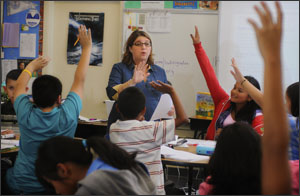
Sometimes, to a secondary student, writing genres are really sorted into two categories: interesting and boring. Summary generally falls into the latter.
As a result, the quality of the writing that a student ends up producing can read too simplistically, not representing the rigor of the actual skill. Because it seems simple, we tend to get simplistic versions—when, in fact, it can be challenging to write a great summary.
For this reason, it has to be taught in a targeted way. Below are two strategies to teach summary or, at least, to indicate your expectation of summary. More can be found in my book, Writing Behind Every Door: Teaching Common Core Writing in the Content Areas (Routledge, 2014).
Two ways to teach summarization
Each of these activities can be done using the content from any classroom, and each represents the building blocks for this deceptively difficult skill. One is simple in nature while the other reflects a more rigorous version of this writing genre.
► What’s the Big Idea?
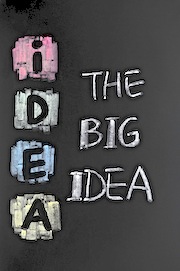
Take a piece from some kind of informational writing and then ask students to summarize the main idea. See the student sample below.
► The Executive Summary
Summaries are not always simple paragraphs or mere sentences in length. The Executive Summary is a rigorous genre that can be seen in college work and in many careers. They often accompany important reports and studies. The Executive Summary uses the techniques of summary to indicate a plan or pitch an idea. It’s like the combination of summary and argument, but with a calm, professional voice.
The point of this kind of writing is best told in real-world role-play. Imagine the student has a boss (you), and must pitch the gist of an issue to you. The purpose of the pitch is to educate you quickly about a topic before your interest and time wanes during this mythical meeting. The pitch must be simple, meaningful, and readable so that anyone can understand the issue and the solution the student may be proposing. An Executive Summary should do the following:
- Summarize the main points of the issue;
- Analyze the most important points; and
- Recommend a solution.
When writing an Executive Summary, students should be encouraged to do the following:
- Keep language strong and positive.
- Write no more than two pages.
- Use different text structures: subtitles, bold fonts, bullets, etc.
- Write in short, readable paragraphs.

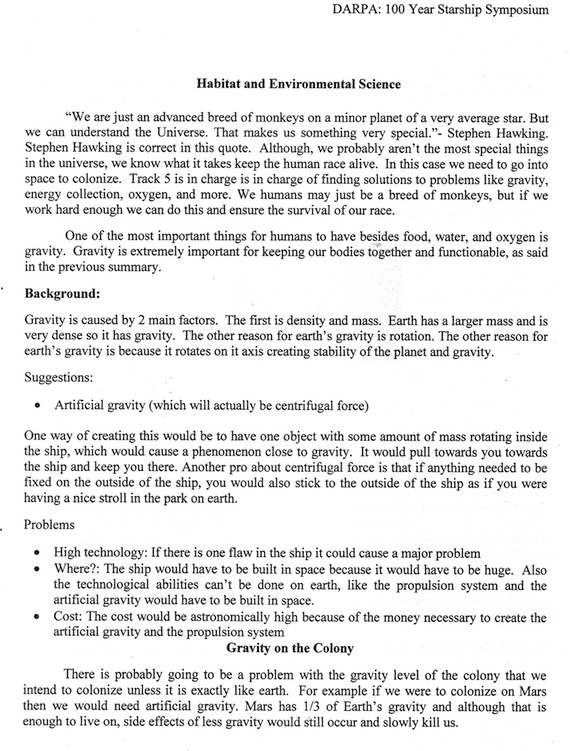
This science-based executive summary both informed the audience about the topic and pitched a solution to the problem. In our project, the students themselves role-played as scientists. As such, there was an underlying presence of narrative throughout the whole science unit as well. Some might say it was a multi-genre essay (and they would be right), but it was all based on summary.
So, can students DO all this?

For example, in the matter of “text structures,” I might invite students to examine a classroom textbook. Why are certain phrases in bold, in italics, in all caps? What makes a word or phrase worthy of being a headline? What is the purpose of indenting? What are ways to develop a list of items? What kind of text draws your eye immediately? How much text is needed until you, the reader, hit that “I’m zoning out and don’t even want to tackle reading any more of this” point?
As a content-area teacher, the main thing is to be able to expect those writing and information processing skill sets – and to know enough about them so that you can hold students accountable for producing them. Confer with your ELA teachers as you plan for this assignment. Doing so will create a more supportive culture in a school. It will also help students in their goal to transfer skills from classroom to classroom and, more importantly, from school to the world beyond.
What are some ways you help students summarize informational text?
_____
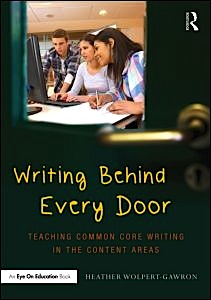

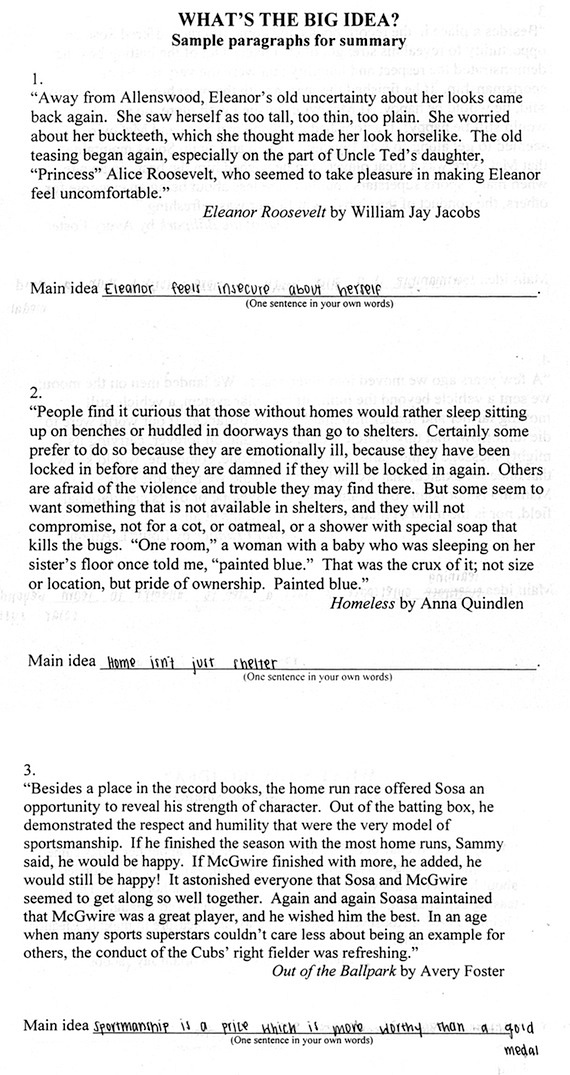
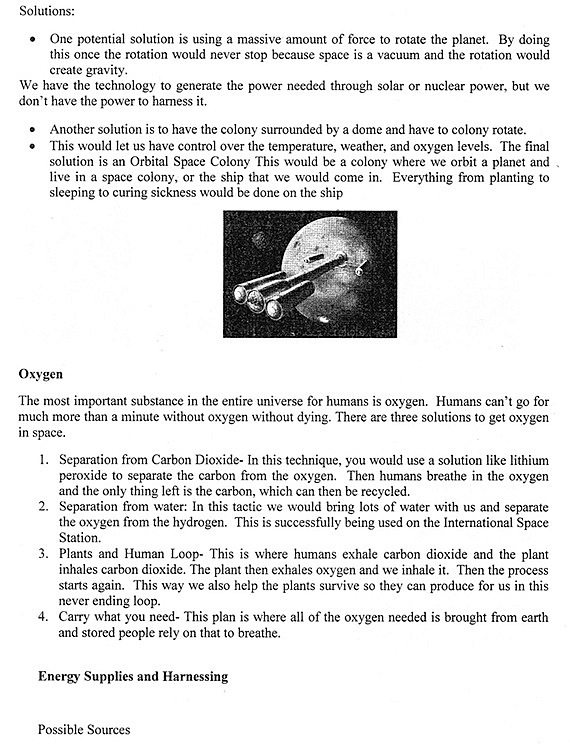
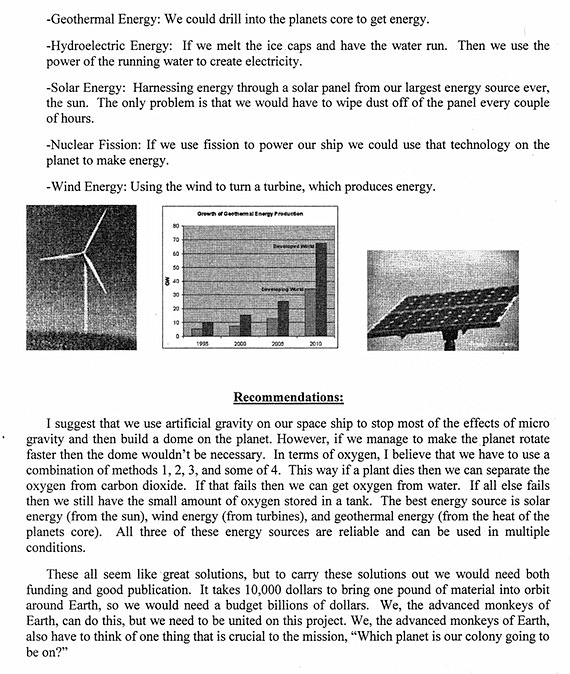

































I agree that teaching summarizing is more difficult than people think. Your first exercise example is something I will try. The second exercise example needs a blue ribbon. Though pretty, it made me feel tired – rather than inspired… much more work than simply summarizing. Good job to the student and teacher.